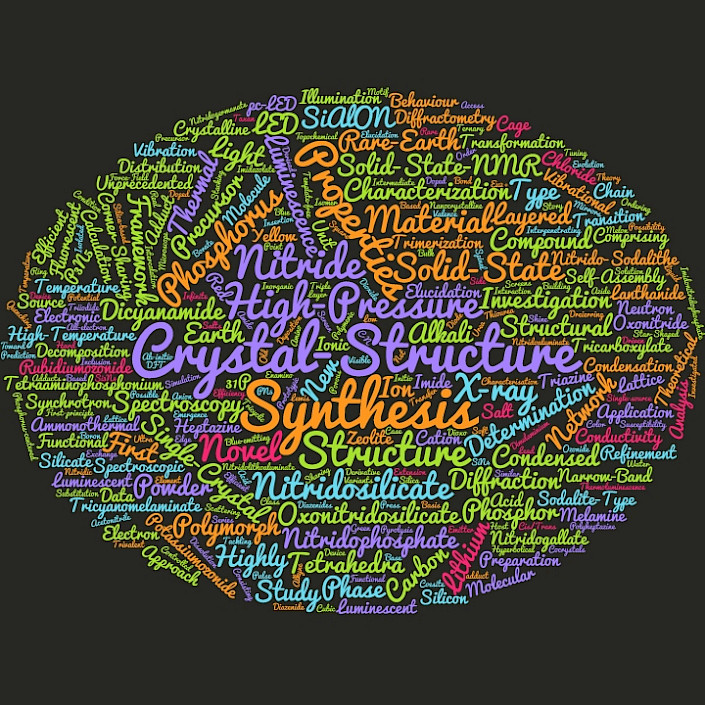Research Topics
The research interests of Prof. Schnick are dedicated to the discovery, development and application of novel functional materials based on nitrides and oxonitrides of group 13 to 15 elements in combination with alkali, alkaline earth, rare earth metals or hydrogen.
Advanced synthetic approaches are developed exploiting high-temperature and high-pressure syntheses (multianvil, DAC) as well as molecular precursor and inorganic polymer chemistry.
New materials are thoroughly investigated by crystallographic methods (X-ray, neutron), electron microscopy (EDX, HRTEM, SEM), spectroscopy (solid-state NMR, FTIR, Raman) and with regard to materials properties (e.g. luminescence, nonlinear optical behavior, magnetism, ionic conductivity or mechanical properties).
Structure, stability and properties of materials are additionally investigated by theoretical methods (DFT and lattice energy calculations).
Recent research highlights of the Schnick group include novel synthetic approaches to nitridosilicates and nitridophosphates, structure elucidation of binary α-P3N5 and its high-pressure polymorph γ-P3N5, discovery of the first nitridic zeolites (NPO and NPT) and clathrate structures, ab-initio structure determination of important C3N4-precursor compounds e.g. melam, melem, and melon as well as the 2-dimensional polymeric carbon nitride-type materials poly(heptazine imide) and poly(triazine imide).
A major application breakthrough has been achieved by the discovery and development of highly efficient Eu-doped nitridosilicate, oxonitridosilicate and nitridoaluminate phosphors that are industrially used for phosphor converted (pc)-LEDs.

